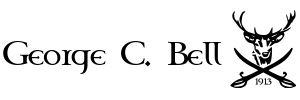Who is George C. Bell?
We are a Sheffield-based company specialising in industrial engraving equipment, delve into the remarkable world of Lasers, Fibre, Ultraviolet (UV), and CO2 marking technologies in conjunction with Electrochemical and Dot Peen/Pin marking machines. This exploration aims to shed light on their applications, advantages, and contributions across various industries.
Laser Marking Technologies:
- CO2 Lasers:
Applied on non-metallic materials, CO2 lasers excel in engraving, etching, and marking surfaces such as wood, glass, and plastics.
Ideal for high-speed applications, ensuring swift and accurate results.
- Fibre Lasers:
Renowned for exceptional precision and reliability, fibre lasers are widely used for marking metals and alloys.
High beam quality facilitates fine details and intricate designs.
- Ultraviolet (UV) Lasers:
Optimal for marking heat-sensitive materials, UV lasers achieve high-contrast marks on plastics and certain metals.
Enable precise and permanent marking on a variety of surfaces.
Electrochemical Marking Machines:
- Principle of Operation:
Utilising a chemical reaction, these machines create indelible marks on metal surfaces, ideal for applications requiring deep, corrosion-resistant marks.
- Applications:
Widely embraced in aerospace, automotive, and oil and gas industries for part identification and traceability.
Ensures durability and longevity of marks in harsh environments.
Dot Peen/Pin Marking Machines:
- Mechanical Marking:
This method utilises either pneumatic or electronic mechanisms, employing a driven pin to imprint surfaces with alphanumeric characters, logos, and diverse codes like DataMatrix and QR codes.
Capable of adhering to GS1 standards for the medical industry marking.
- Diverse Applications:
Commonly adopted in automotive, electronics, and medical industries for part serialisation and tracking.
Offers robust and cost-effective marking solutions.
Synergies and Integration:
- Combining Laser Technologies:
Integration of CO2, Fibre, and UV lasers allows for a broader material compatibility range and diverse marking effects.
Enables tailored solutions for various industrial requirements.
- Complementary Use with Electrochemical and Dot Peen/Pin:
Hybrid systems combining laser technologies with electrochemical, or dot peen/pin marking offer enhanced versatility.
Laser precision complements the depth and durability of electrochemical and dot peen/pin marking.
Advantages:
- High Precision:
Laser technologies provide micron-level accuracy for intricate marking, while dot peen and electrochemical methods ensure deep and lasting impressions.
- Versatility:
Combined technologies offer extensive material compatibility, meeting diverse industrial needs across both flat and irregular surfaces.
- Speed and Efficiency:
Laser systems provide rapid marking, enhancing production throughput.
Dot peen and electrochemical methods offer efficient and reliable solutions for high-volume manufacturing.
Conclusion:
In the dynamic realm of industrial marking, the integration of Laser, Fibre, Ultraviolet, and CO2 technologies with Electrochemical and Dot Peen/Pin marking machines signifies a pinnacle of precision, versatility, and efficiency. These technologies play a crucial role in achieving durable, high-contrast marks on various materials, contributing significantly to product traceability, quality control, and overall industrial efficiency.
